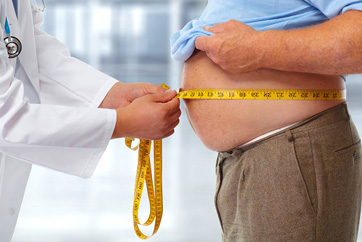Belly fat associated with increased CV risk
Even in adults with normal BMI, belly fat is a CV risk factor, according to a presentation at EuroPrevent.
According to the researchers, patients should see their doctor if their waist is bigger than their hips. “The belly is usually the first place we deposit fat, so people classified as overweight BMI but without a fat belly probably have more muscle, which is good for health,” Jose Medina-Inojosa, MD, MSc, from the division of preventive cardiology at the Mayo Clinic in Rochester, Minnesota, and the International Clinical Research Center of St. Anne’s University Hospital in Brno, Czech Republic, said in a press release. “Muscle is like a metabolic storehouse and helps decrease lipid and sugar levels in the blood.”
The researchers conducted a prospective community-based cohort study consisting of 1,692 participants who underwent clinical examination and anthropometric measurements between 1997 and 2000 to determine whether central obesity conferred risk for major adverse CV events.
Major adverse CV events were defined as acute MI, coronary revascularization, stroke or death. Median follow-up was 16.1 years.

During follow-up, a major adverse CV event occurred in 22.6% of patients.
Compared with patients with normal weight and no central obesity, major adverse CV event risk was highest among those with normal weight and central obesity (unadjusted HR = 1.79; 95% CI, 1.23-5.56). After adjustment for age and sex, this relationship remained constant (adjusted HR = 1.87; 95% CI, 1.16-3.08), and was slightly attenuated after further adjustment for hypertension, diabetes and dyslipidemia risk (aHR = 1.52; 95% CI, 1.04-2.39).
“The combination of distribution of fat and normal weight by BMI yields the highest MACE risk,” Medina-Inojosa said in a presentation. “These findings have significant implications in clinical practice ... to identify normal-weight individuals with central obesity.” by Dave Quaile
Reference:
Medina-Inojosa J, et al. Abstract 380. Presented at: EuroPrevent; April 19-21, 2018; Ljubljana, Slovenia.
Disclosures: Medina-Inojosa reports no relevant financial disclosures.
